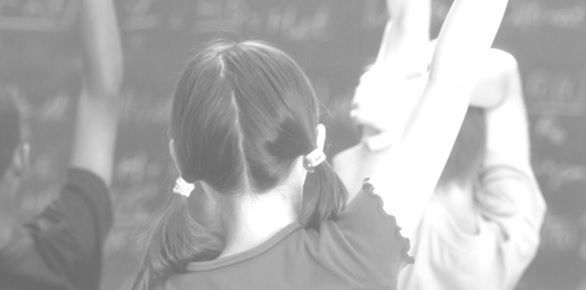
Lack of an interdisciplinary approach and little regard for emotional intelligence are among the inadequacies of the current education system.
Inside an auto shop near my house, there is a glass showcase with prints detailing the daily schedule of an employee in 1901 — at the peak of the industrial revolution. The employees were separated by age and skills, they had eight-hour work days (with bells ringing every two hours to signal breaks), and the shop emphasized linear organization and conformity.
“Don’t worry honey, no one uses that method anymore,” the shop owner declared as she saw me reading. I pictured the education system I’ve grown up with, in which students are taught to conform, walk in lines, and speak only when spoken to. We respond Pavlovian-ly to bells and are still grouped by age. “I wish I could agree,” I responded.
The purpose of analyzing the American education system is not only to critique it. There are many great aspects which are not available in most other countries. We have polished facilities, respected extracurriculars, and amazing access to technology. And it is not only the system at fault, utilization of the system is equally flawed.
I sit in my classes with my school provided laptop (which can reach unlimited information) and access 3D printers and am instructed to read an online textbook while the paper copy sits three feet away from me. The irony of how resources are utilized reflects an under-appreciation which can only be seen in privileged areas.
Most shocking is, even with all its technological advancements, my education still lacks an interdisciplinary approach. To me, a strong, interdisciplinary approach means that the depth and interconnectedness of academic endeavors is embraced, not fought off. It means acknowledgment that true understanding of any topic comes from its real world application, which is never fully linear as our education system tries to make it. Humans are not built to be conformist thinkers because we are rarely fortunate enough to encounter linear problems. Yet, my classes are all taught separately, as if segregated by specialization like a factory.
Alongside non-linear, interdisciplinary problem-solving come critical and creative thinking skills. Ironically, our critical thinking skills are measured through standardized testing. The difficulty with critical and creative thinking is that it cannot be taught, no matter how many SAT classes one takes. An education grounded in critical and creative thinking is one similar to interdisciplinary studies in which real world application is the foundation of a curriculum, not a garnish.
As seen in its affiliation for linear thinking, the education system refuses to accommodate the “human-ness” of its students. This contributes to the most significant deficiency in my education: emotional intelligence. The IQ test’s counterpart — the Emotional Quotient Test — has nearly been forgotten.
When reading Lord of the Flies, we focused on the literary devices, not its message regarding humanity. Similarly, in Animal Farm, our discussions were about the evolution of communism and “animalism” rather than the acceptance of the pigs as superiors by the rest of the farm. The study of human-ness and emotional qualities is important because it explains why humans act as they do. By not studying it, we are taught to not question societal norms, a dangerous practice.
The other inadequacy in emotional intelligence is its utilization; we are taught not to work together. While this prevents cheating and helps standardized intelligence measurements, it highly hinders learning. Great ideas and resolutions come from conversation and collaboration, not isolated intellectual vacuums.
This anti-collaborative sentiment translates into a high degree of competitiveness between students, which amplifies the value placed on quantitative success. This competitiveness eventually translates to a disregard for learning and a focus only on grades, which then perpetuates the problem of cheating even more and creates a vicious cycle.
Conveniently, empathy and emotional awareness were also missing from the interactions between factory workers and bosses during the industrial revolution. As we move forward, our education system is still trapped in the glass showcase of a 1901 auto shop expecting students to process and fix our abstract, organic world from a perfectly linear row of desks.
(Avani Venkatesh is a high school senior. She plays softball and volleyball, and is an aspiring writer.)
Read more from Avani Venkatesh:
Liberty and justice for all (July 9, 2018)
Why America’s students can no longer open doors (February 22, 2018)
Traveling the world as a vegetarian (December 31, 2017)
Young’s dissing of Jayapal is a reflection of today’s America (September 28, 2017)
The youth grabs back: They march on the streets, and on Instagram, Twitter, Snapchat (January 25, 2017)
Visiting India as an Indian American teenager (November 15, 2016)
Why the youth of America are struggling to make their voices heard in 2016 (November 5, 2016)
AIF’s young volunteers infuse energy to The Cause (June 14, 2016)
Richmond gearing up for 2015 UCI Road World Cycling Championship (September 21, 2015)
A Greek vacation in the time of turmoil (July 9, 2015)
Acadia National Park in Maine: Land of the bees and the home of the waves (August 12, 2014)



